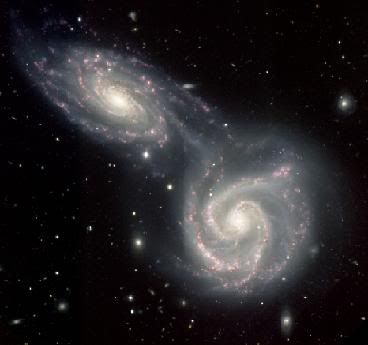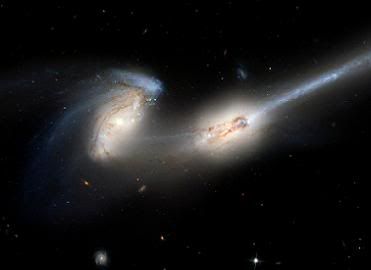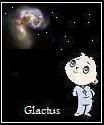Post by glactus on May 18, 2011 17:23:38 GMT

NGC 5426 and 5427
NGC 5426 and NGC 5427 are two spiral galaxies of similar sizes engaged in a dramatic dance. It is not certain that this interaction will end in a collision and ultimately a merging of the two galaxies, although the galaxies have already been affected. Together known as Arp 271, this dance will last for tens of millions of years, creating new stars as a result of the mutual gravitational attraction between the galaxies. They are located 90 million light-years away towards the constellation of Virgo (the Virgin). Apparent magnitude is 11.4. The Arp 271 pair is about 130, 000 light-years across and were originally discovered in 1785 by William Herschel.

The Antennae galaxies
The Antennae are undergoing a galactic collision. Located in the NGC 4038 group with five other galaxies, these two galaxies are known as the 'Antennae' because the two long tails of stars, gas and dust thrown out of the galaxies as a result of the collision, resemble the antennae of an insect. They are located 45 million light years away in the constellation of Corvus. Apparent magnitude is 11.2
The nuclei of the two galaxies are joining to become one giant galaxy. Most galaxies probably undergo at least one significant collision in their lifetimes. This is likely the future of our Milky Way when it eventually collides with the Andromeda Galaxy.

The Mice galaxies
NGC 4676, or the Mice Galaxies, are two spiral galaxies in the constellation of Coma Berenices About 290 million light-years away. Apparent magnitude is 14.7. They are presently in the process of colliding and merging. Their name refers to the long tails produced by tidal action—the relative difference between gravitational pulls on the near and far parts of each galaxy—known here as a galactic tide. it is a possibility that both galaxies have experienced collision, and will continue colliding until they coalesce.

The Antennae
Credits: These are NASA images.
Text by Wikipedia


